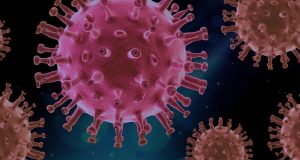Recently, the first RNA isolation of SARS-CoV-2 from a paediatric patient's conjunctival swab aroused great interest. The study reporting the case was published in European Journal of Ophthalmology. The presence of SARS-CoV-2 on the ocular surface is still a hotly debated topic. Keratoconjunctivitis and other ocular abnormalities, such as conjunctival hyperemia, chemosis, epiphora and increased secretion, have been described as an early clinical sign of COVID-19 in up to 31.6% of patients. Some works have reported the identification of SARS-CoV-2 RNA in conjunctival swabs of adult COVID-19 patients with concomitant eye signs and symptoms.
Conjunctival swab in the paediatric patient: the scientific study
 A paediatric, Caucasian, 11-year-old male patient presented to the Paediatric Clinic of the IRCCS Foundation and San Matteo Hospital (Pavia, Italy) for medical investigation due to close and prolonged contact with a family member infected with COVID-19. After nasal swabbing, SARS-CoV-2 RNA was identified by molecular testing (reverse transcription polymerase chain reaction, RT-PCR). The positive paediatric patient was then admitted to hospital and placed on a treatment regimen of azithromycin (10 mg/kg/day twice daily) and hydroxychloroquine (5 mg/kg/day twice daily). Three days after admission to hospital, the patient complained of mild ocular symptoms (feeling of pain, burning, tingling and lacrimation) for which an ophthalmological assessment was performed. No signs of conjunctivitis or keratitis were detected, but on the basis of the patient's medical history it was decided to perform a conjunctival swab which detected the presence of SARS-CoV-2 RNA. Subsequently, nasal swabs were repeated on days 10, 16, 19, 23 and 25 after hospitalisation; the investigations revealed a decreasing trend in SARS-CoV-2 RNA levels and the last detection was performed on day 19. Due to the absence of ocular signs and symptoms, the conjunctival swab was not repeated at the same time points as the nasal swabs. To confirm complete negativity for all body fluids, conjunctival swabs were performed on day 25, with a negative result.
A paediatric, Caucasian, 11-year-old male patient presented to the Paediatric Clinic of the IRCCS Foundation and San Matteo Hospital (Pavia, Italy) for medical investigation due to close and prolonged contact with a family member infected with COVID-19. After nasal swabbing, SARS-CoV-2 RNA was identified by molecular testing (reverse transcription polymerase chain reaction, RT-PCR). The positive paediatric patient was then admitted to hospital and placed on a treatment regimen of azithromycin (10 mg/kg/day twice daily) and hydroxychloroquine (5 mg/kg/day twice daily). Three days after admission to hospital, the patient complained of mild ocular symptoms (feeling of pain, burning, tingling and lacrimation) for which an ophthalmological assessment was performed. No signs of conjunctivitis or keratitis were detected, but on the basis of the patient's medical history it was decided to perform a conjunctival swab which detected the presence of SARS-CoV-2 RNA. Subsequently, nasal swabs were repeated on days 10, 16, 19, 23 and 25 after hospitalisation; the investigations revealed a decreasing trend in SARS-CoV-2 RNA levels and the last detection was performed on day 19. Due to the absence of ocular signs and symptoms, the conjunctival swab was not repeated at the same time points as the nasal swabs. To confirm complete negativity for all body fluids, conjunctival swabs were performed on day 25, with a negative result.
The identification of SARS-CoV-2 RNA in the eye specimen of a paediatric patient with COVID-19 shows that the virus can be detected in the conjunctival specimens of children and not only of adults, as previously thought. The ocular manifestations of the paediatric patient with COVID-19 appear to be milder than in adults, as observed in a group of 27 paediatric patients with COVID-19 and ocular manifestations on admission. Another case of a paediatric patient with confirmed COVID-19 and ocular symptoms was reported in China, but no conjunctival swabs were collected.
The study concludes that although transmission through tears is theoretically possible, it is still unclear whether this can be considered an important route for the spread of SARS-CoV-2.
Bibliography
Dr. Carmelo Chines
Direttore responsabile
